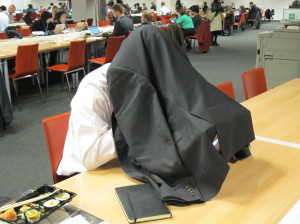 New Zealand is coming under increasing scrutiny in Lima, not least because it’s our turn to be reviewed by the UNFCCC process.
New Zealand is coming under increasing scrutiny in Lima, not least because it’s our turn to be reviewed by the UNFCCC process.
Early next week our representatives will have to defend our position and our lack of action to 190 governments in our first “multilateral assessment.”
Already, there have been some tough questions, coming especially from the EU and China. New Zealand’s answered them, but will have to more to defend itself than these carefully fudged answers.
Our negotiators have been trying to promote our position around the meeting, including a botched attempt in a science discussion yesterday, when they were interrupted halfway through a blatant PR presentation. They were told to get back to the issue at hand (science, not promotion of a country’s so-called “efforts”), after a number of governments objected to our highjacking the agenda. Continue reading “NZ: pushing the world to go beyond 2 degrees”



 So, the threat of a terrorist attack on New Zealand i
So, the threat of a terrorist attack on New Zealand i

You must be logged in to post a comment.